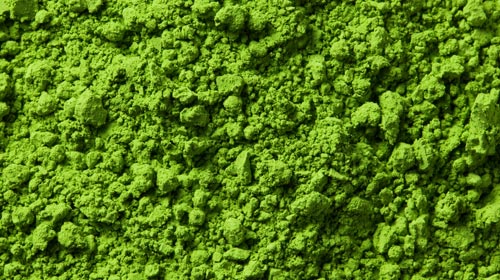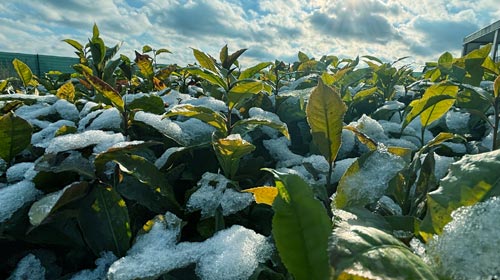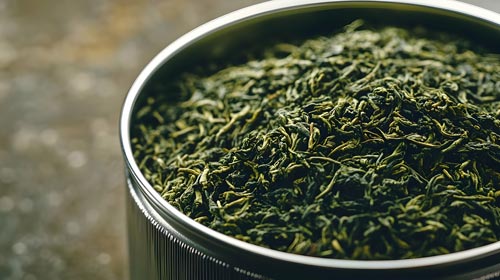What is Tencha actually?
Tencha is a Japanese green tea that is rarely consumed in its pure form – yet forms the basis for one of the most famous tea products of all: Matcha. Even as a standalone leaf tea, tencha develops a fascinating flavor profile that distinguishes it from all other Japanese teas.
Unlike Sencha or Gyokuro, Tencha is not rolled after steaming, but simply dried. The flat-dried leaves appear almost like tissue paper: matte green, light, and fragile. This texture isn't a side effect—it's essential. Only by omitting the rolling process does the leaf remain tender enough to be later ground into fine matcha.
The difference to Sencha & Gyokuro
The biggest difference between Tencha and other Japanese teas lies in the processing. While Sencha is rolled and dried into a needle shape, Tencha remains open. Gyokuro also has a shading process, but the subsequent processing is significantly different.
Tencha is made exclusively from young leaves from shaded plants. Two to four weeks before harvest, the tea plants are covered with light-reducing nets or thatched roofs. This targeted light reduction increases the production of L-theanine and chlorophyll while simultaneously reducing the formation of catechins—giving the tea its distinctively smooth, umami-rich aroma.
Why unrolled? The leaf structure of Tencha
From a botanical perspective, the leaf of Camellia sinensis is made up of finely structured layers: a delicate epidermis surrounds the spongy mesophyll, crisscrossed by a network of leaf veins and conductive pathways.
Because tencha isn't rolled, these inner structures remain largely intact. This has sensory benefits: When brewed, the leaves open gently, releasing their aroma evenly and developing hardly any bitterness.
A special feature is the selection process before the matcha is ground: Thick leaf veins, midribs, and stems are sifted out. Nevertheless, they play a role in the tencha infusion – they contribute subtle, nutty, and slightly grassy notes and reveal the inner architecture of the plant.
Taste, infusion & special features
Tencha has a mild, smooth profile with notes of young spinach, sweet chestnut, and a hint of sea breeze. The texture is almost creamy, even though there's no powder floating in the cup. The infusion is light green, clear, and completely free of bitterness if the water is around 65°C and the brewing time is short.
The unrolled form ensures even extraction – and an amazingly deep, long-lasting aroma that doesn't fade even after multiple infusions.
Tencha at Growing Karma
At Growing Karma, we cultivate tencha in specially shaded tea gardens in Germany, under open-air conditions. Our plants grow slowly, at a natural pace, supported by vibrant soils and a biodiverse environment.
We hand-select only the most tender, top leaves—free of stems, strong veins, or damaged edges. After harvesting, they are immediately steamed, followed by a particularly gentle drying process with warm air.
The result: a rare, high-quality leaf tea that not only serves as a raw material for matcha, but also deserves a place in the cup on its own.
The next time you drink matcha, think of the tencha. The leaf that gives this powder its soul—and which, in its original form, may have even more to tell. Try it neat. Feel the structure, taste the depth—and discover how quiet a great tea can be.




Leave a comment
This site is protected by hCaptcha and the hCaptcha Privacy Policy and Terms of Service apply.